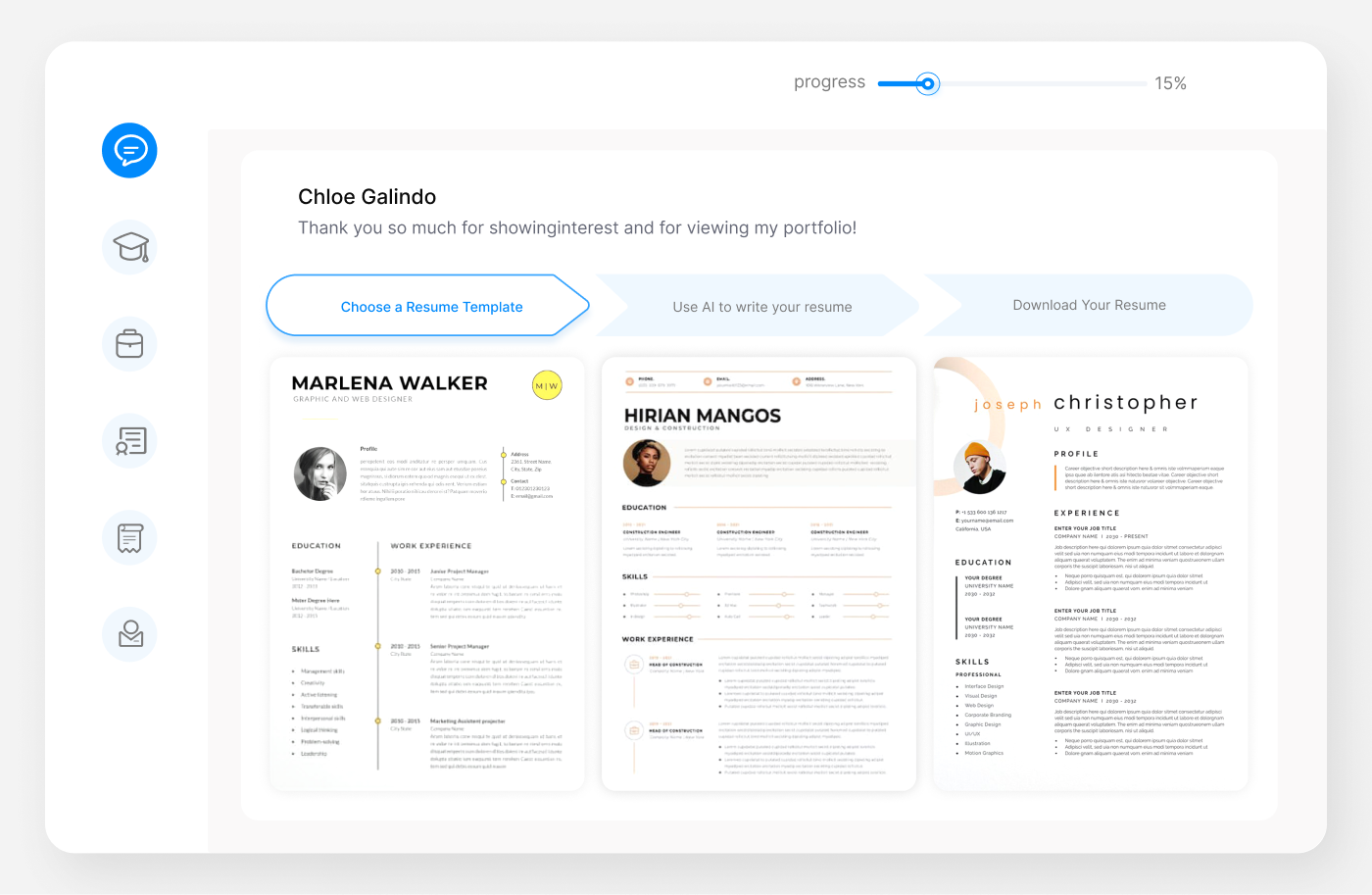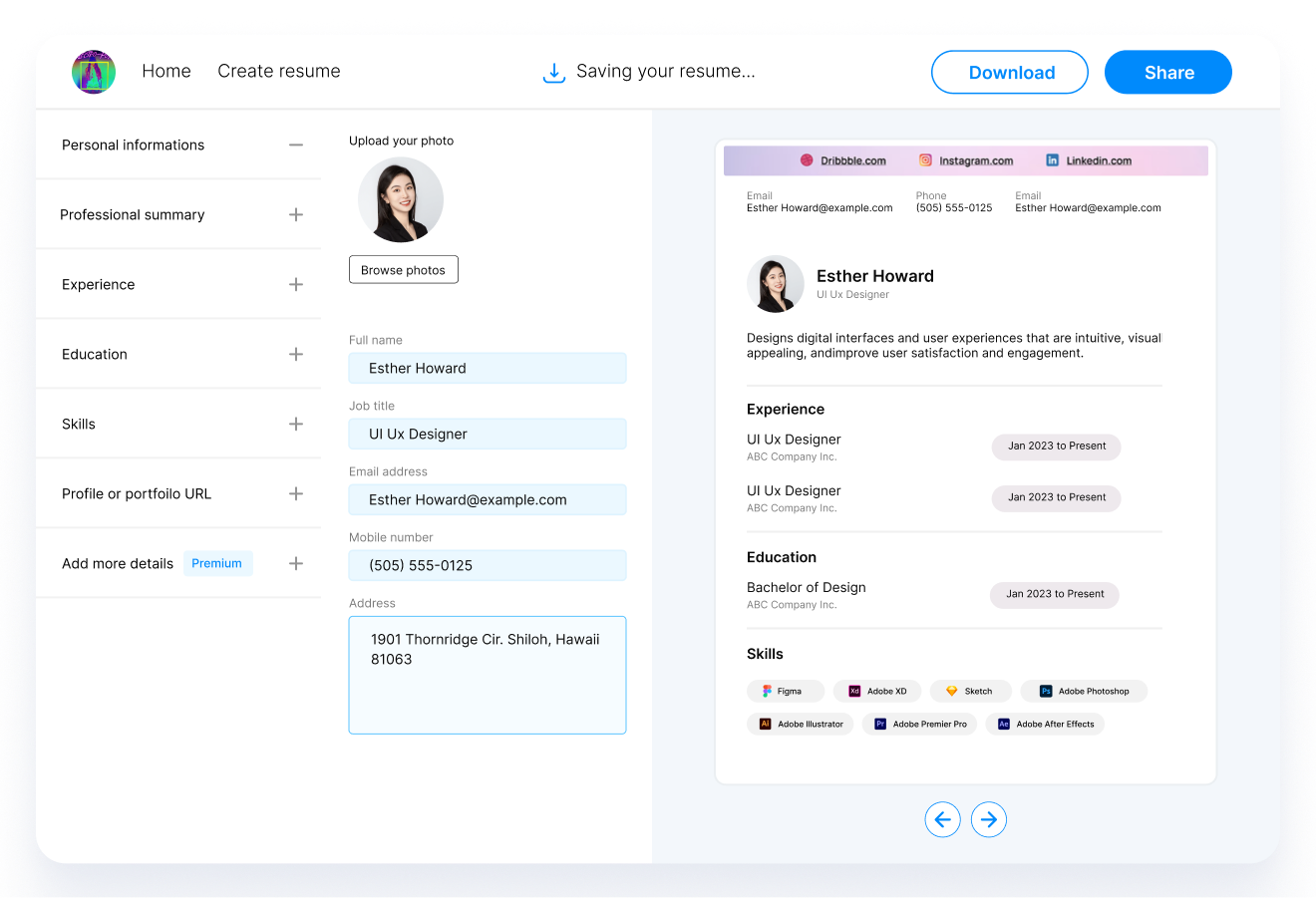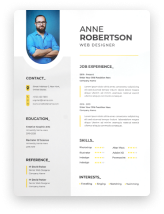In the competitive job market, your resume is your first impression and often your only chance to catch a hiring manager's eye. A well-structured resume can be the difference between landing your dream job and getting lost in the pile. This comprehensive guide delves deep into the art of resume writing, providing you with the tools and knowledge to construct a resume that not only showcases your strengths and achievements but also aligns perfectly with industry standards and hiring managers' expectations. From the essential sections to the optional ones that add value, and from formatting tips to the strategic ordering of content, this guide covers every aspect of resume crafting. Whether you're a seasoned professional or a newcomer to the job market, these insights will elevate your resume from ordinary to extraordinary, making sure you stand out in the sea of applicants.

Part 1: Essential Resume Sections
A resume is more than just a list of your experiences and qualifications - it's a strategic tool to market yourself to potential employers. The essential sections of a resume form the backbone of this tool, providing a structured way to present your professional narrative. Let's delve into these key components.
Heading: Personal Information
The heading of your resume should include your name, contact number, and professional email address. This is the first thing employers see, so ensure it's clear and professional.
Correct Example:
Alex Johnson - Project Manager
123-456-7890
alex.johnson@email.com
Incorrect Example:
Alex J. - World's Best PM
123-456-7890
coolalex@email.com
Objective or Summary Statement: Crafting a Powerful Introduction
The objective or summary statement is your elevator pitch. In just a few sentences, highlight your professional goals, key skills, and what you bring to the table.
Summary for a Marketing Professional:
Dynamic marketing strategist with over 8 years of experience in digital marketing. Proven track record in driving brand growth through innovative campaigns. Seeking to leverage my skills and expertise to contribute to the success of a forward-thinking company.
Work Experience: Presenting Your Professional Journey
Your work experience is the heart of your resume. List your roles in reverse chronological order, focusing on achievements and responsibilities that align with the job you're applying for.
Work Experience for a Software Developer:
Senior Software Developer
Tech Solutions Inc.
New York
Jan 2018 - Present
- Led a team of 5 developers in creating a multi-platform application, resulting in a 30% increase in customer engagement.
- Spearheaded the migration of legacy systems to modern frameworks, enhancing system efficiency by 40%.
Education: Highlighting Academic Achievements
Include your highest degree first, followed by other degrees or certifications in reverse chronological order. If you're a recent graduate, you can add more details like relevant coursework or academic projects.
Education Section for a Recent Graduate:
Bachelor of Science in Computer Science
University of California, Los Angeles (UCLA)
Graduated 2023
- Relevant Coursework:
- Machine Learning,
- Data Structures,
- Computer Networks
- Final Year Project:
- Developed a chatbot using AI algorithms
Skills: Showcasing Your Capabilities
List the skills relevant to the job you're applying for. This section should be a mix of hard and soft skills, presented in a concise manner.
Correct Skills Listing:
-
Proficient in Python, Java, and C++
-
Strong communication and teamwork abilities
Incorrect Skills Listing:
-
Good at programming
-
Works well with others
Part 2: Optional Sections for Added Impact
While the essential sections of your resume lay the foundation, the optional sections offer an opportunity to showcase additional strengths and experiences that can set you apart from other candidates. These sections are particularly useful for highlighting aspects of your professional profile that don't neatly fit into the standard categories.
Certifications and Licenses: Enhancing Your Professional Profile
If you have relevant certifications or licenses, especially those recognized in your industry, including them can significantly boost your credentials.
Certifications for an IT Professional:
-
Certified Information Systems Security Professional (CISSP), 2021
-
Microsoft Certified: Azure Solutions Architect Expert, 2020
Publications and Presentations: Demonstrating Expertise
This section is particularly important for roles in academia, research, or positions that value thought leadership. List any relevant publications or presentations, including co-authorships.
Publications for a Research Scientist:
-
"Innovations in Biotechnology" published in Science Journal, May 2022
-
Presented at the Annual Biotech Conference, 2021,
- on "The Future of Genetic Engineering"
Projects: Illustrating Real-World Application
Detailing specific projects can provide concrete examples of your skills and experience, especially for job roles that are project-centric like engineering, IT, or marketing.
Projects for a Digital Marketer:
-
Led a digital campaign for ABC Corp, increasing online engagement by 40% within six months.
-
Developed a social media strategy for XYZ Brand, resulting in a 25% increase in followers.
Volunteer Experience: Reflecting Community Involvement
Including volunteer work demonstrates your commitment to community and social responsibility, traits valued by many organizations.
Volunteer Experience for a Human Resources Professional:
-
Volunteer Coordinator, Local Food Bank, organized monthly food drives, managing over 30 volunteers.
-
HR Advisor for Non-Profit Organizations, providing pro bono consulting services on employee engagement strategies.
Languages: Emphasizing Multicultural Competence
Fluency in additional languages can be a significant asset in today's globalized business environment, especially in roles that require international collaboration or communication.
Language Proficiency for a Sales Manager:
-
Fluent in English and Spanish.
-
Conversational in French and Portuguese.
Part 3: Specialized Sections for Specific Fields
Tailoring your resume to your field is crucial. Certain professions demand specific sections that highlight relevant experiences or skills unique to that area of work. Let's explore some of these specialized sections.
Technical Skills: For IT and Engineering Professionals
In fields like IT and engineering, technical skills are paramount. This section should list specific software, programming languages, or tools you're proficient in.
Technical Skills for a Software Engineer:
- Languages: Python, Java, C++
- Tools: Docker, Kubernetes, Jenkins
- Databases: MySQL, MongoDB, PostgreSQL
Research Experience: Tailoring for Academics and Scientists
For professionals in academia or science, a section dedicated to research experience is essential. Include any significant research projects, along with their outcomes or publications.
Research Experience for a Biologist:
- Led a research team studying amphibian disease resistance, resulting in two published papers.
- Conducted field research in the Amazon rainforest on biodiversity, contributing data to a global environmental study.
Artistic Endeavors: Integrating for Creative Roles
For those in creative fields, showcasing artistic endeavors can highlight your creativity and unique perspective.
Artistic Endeavors for a Graphic Designer:
- Designed a winning poster for an international art competition.
- Created a series of illustrations for a children's book that was featured in a local art exhibit.
Awards and Honors: Celebrating Recognized Achievements
Recognitions and awards can set you apart, demonstrating excellence and acknowledgment in your field.
Awards and Honors for a Sales Professional:
- Received 'Top Regional Salesperson of the Year' award for two consecutive years.
- Honored with the 'Innovative Sales Strategy Award' at the National Sales Conference, 2023.
Part 4: Effective Resume Formatting
The layout and format of your resume play a crucial role in its readability and overall impact. A well-formatted resume can significantly enhance the presentation of your content, making it more appealing to potential employers.
Choosing the Right Resume Format: Chronological, Functional, or Combination
Select a format that best showcases your strengths and relevant experiences:
-
Chronological: Ideal for those with a steady career progression in the same field.
-
Functional: Suitable for career changers or those with gaps in employment.
-
Combination: A mix of both, highlighting skills while providing a chronological work history.
Chronological Format:
Best for individuals with a clear, consistent career path.
Functional Format:
Not recommended for those with a linear, progressive work history.
Strategic Use of Bullet Points and Text Formatting
Use bullet points to make your achievements and responsibilities clear and concise. Employing bold and italic fonts strategically can also help important information stand out.
Effective Use of Bullet Points and Formatting:
- Managed a team of 10:
- Increased overall team productivity by 25%.
- Developed a new sales strategy:
- Resulted in a 15% increase in quarterly sales.
Visual Appeal: Balancing Design with Professionalism
While creative design can make your resume stand out, it's important to balance it with professionalism. Ensure the design enhances readability and doesn't distract from the content.
Part 5: The Order of Sections - Best Practices
The arrangement of sections on your resume can significantly influence its effectiveness. The order should highlight your strengths and downplay weaknesses, ensuring that the most compelling information catches the recruiter's eye first.
Tailoring Order to Match Career Stage and Job Requirements
-
Early Career: Focus on education and relevant coursework or internships if your work experience is limited.
-
Mid-Career: Prioritize your professional experience and significant achievements in your field.
-
Career Change: Emphasize transferable skills and relevant experiences from different roles or industries.
For a Recent Graduate:
Education section comes immediately after the summary.
For a Seasoned Professional:
Leading with education instead of extensive work experience.
Balancing Relevance and Impact in Section Placement
Place the most relevant and impactful information where it will be seen first. For instance, if you have impressive certifications or awards, consider placing them higher up if they are highly pertinent to the job.
Order for a Technology Professional:
- Contact Information
- Summary Statement
- Technical Skills
- Work Experience
- Education
- Certifications
Part 6: Crafting Compelling Titles and Headings
The titles and headings on your resume guide the reader through your professional story. They need to be clear, concise, and reflective of the content beneath them.
Utilizing Action Verbs and Industry Keywords
Start headings and job descriptions with action verbs, and incorporate keywords relevant to your industry. This strategy is not only engaging but also helps in optimizing your resume for Applicant Tracking Systems (ATS).
Effective Title:
"Project Management Experience"
- for a role emphasizing project management skills.
Ineffective Title:
"Previous Jobs"
- lacks specificity and impact.
Ensuring Clarity and Conciseness in Titles
Headings should be straightforward and unambiguous, indicating exactly what the following section contains. Avoid vague or overly creative titles that may confuse the reader.
Clear and Concise Titles:
- Professional Experience
- Technical Proficiencies
- Leadership and Awards

Conclusion
Recap: Building a Resume that Stands Out
Crafting a standout resume involves careful consideration of content, format, and organization. By strategically structuring your resume with the right sections, tailoring it to your career stage, and employing effective formatting and titles, you position yourself as a compelling candidate.
Final Tips for Polishing and Reviewing Your Resume
-
Proofread for spelling and grammatical errors.
-
Ensure consistency in formatting and style.
-
Seek feedback from mentors or peers in your industry.
FAQs
Q: How long should my resume be?
A: Aim for one page, but two pages are acceptable for those with extensive experience.
Q: Should I include references in my resume?
A: It's typically not necessary; provide them upon request.
Q: How can I make my resume stand out to employers?
A: Tailor it to each job application, highlighting relevant skills and experiences.
Q: Is it necessary to customize my resume for each job application?
A: Yes, it significantly increases your chances of getting noticed.
Q: How often should I update my resume?
A: Regularly, especially when you gain new skills or experiences.
Recommended Reading






